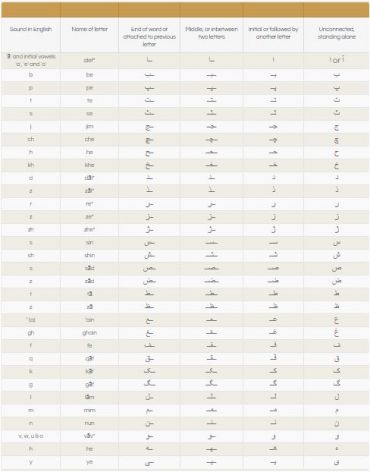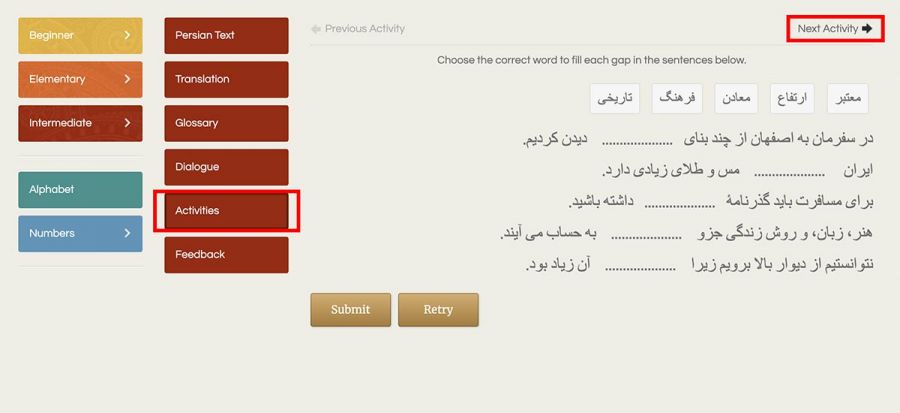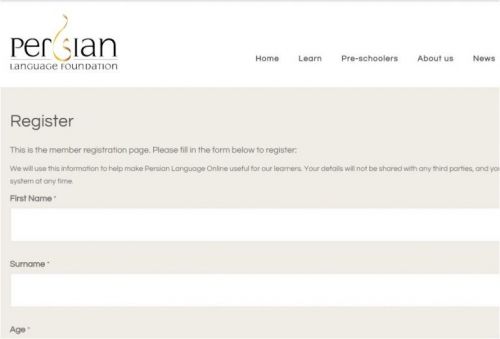
Project 6060 – Lesson 45
-
EN
Lesson 45
Persepolis
***
Translation
Hundreds of years after Alexander’s attack and after the Arabs’ raid on Iran and at a time when memories and thoughts of Achaemenid kings had been forgotten, some people who were living in the villages and towns near to Shiraz would pass by some ruins close to the city of Marvdasht. They would see that upon these ruins, pictures of a royal throne were engraved. The people couldn’t read the cuneiform script of the inscriptions engraved onto the stone and thought that this was the very throne of Jamshid, who Ferdowsi referenced in his Shahname. Because of this, they named this site ‘Jamshid’s Throne (Takht-e Jamshid)’. A while later, archaeologists were able to translate the cuneiform script of the inscriptions and understood that its original name had been ‘Parse’. ‘Parse’ meant ‘Town of the Persians’ and the Greeks called it ‘Persepolis’, but today in Iran they call it ‘Takht-e Jamshid’.
As has been said, Takht-e Jamshid is situated near to Marvdasht and 50 kilometres north of Shiraz and the start of its construction dates back to more than 2500 years ago. This site was the glorious and ceremonial capital of the Kingdom of Iran at the time of the Achaemenid empire and its founder was Darius the great. For 50 years, Takht-e Jamshid was a centre for holding ceremonies and celebrations, especially Noruz, and on the first day of the New Year many groups came from various countries to gather at Takht-e Jamshid to represent those nations with diverse gifts and presented these gifts to the king.
Historians believe that Alexander the Macedonian, the Greek Commander-in-Chief, 330 years before the birth of Christ, attacked Iran and burnt down Takht-e Jamshid and, in doing so, destroyed a large portion of Achaemenid books, culture and art.
Takht-e Jamshid is extremely large and formed of a few palaces. The full extent of its palaces is four times that of the Acropolis in Athens, meaning it is 125 thousand metres squared. The Apadana Palace, Hadish Palace, The Palace of Three Gates, The Palace of One Hundred Columns, The Queen’s Palace, The Tachara Palace, and the Council Palace are some of the palaces of Takht-e Jamshid.
The Apadana Palace is one of Takht-e Jamshid’s oldest palaces and was used for holding Noruz celebrations and receiving representatives of various countries into the presence of the king. In the Council Palace, the king would discuss with and consult with elders.
It is said that the construction of this large and beautiful complex took more than one hundred years. Architects, artists, labourers and countless women and men took part in the construction of these glorious buildings who, in addition to their salaries, would also benefit from workers’ insurance. In the excavation of Takht-e Jamshid, thousands of documents were found, which prove that all of these castles’ labourers, including the builders carpenters, stonemasons, architects and engineers, were paid a wage, unlike in the construction of Egypt’s Pyramids, where labourers were forced to work. The workers who had a role in the building of Takht-e Jamshid were made up of a variety of nationalities, such as Iranian, Egyptian, Babylonian, Greek, Elamite and Assyrian, and all of them came under the protection of Iran’s imperial Achaemenid government.
Since 1979, Takht-e Jamshid has been a UNESCO-registered world heritage site.
-
FR
Leçon 45
Persépolis
***
Traduction
Coming soon
-
ES
Lección 45
Persépolis
***
Traducción
Coming soon
-
FA
درس چهل و پنجم
تختِ جمشید
***
متن فارسی
صدها سال پس از حملۀ اسکندر و بعد از یورش اعراب به ایران و در زمانی که یاد و خاطرۀ پادشاهان هخامنشی فراموش شده بود، مردمی که در روستاها و شهرهای نزدیک شیراز زندگی می کردند از کنار خرابههایی در نزدیکی شهر مرودشت می گذشتند. روی این خرابه ها تصاویر حکّاکی شده از تخت شاهی را می دیدند. مردم نمیتوانستند خطّ میخی کتیبههای حک شدۀ روی سنگها را بخوانند و فکر می کردند که این همان تخت سلطنت جمشید است که فردوسی در شاهنامۀ خود از آن یاد کردهاست. به همین خاطر نام این مکان را «تختِ جمشید» نهادند. بعدها باستانشناسان توانستند خطّ میخی کتیبه را ترجمه کنند و متوجّه شدند که نام اصلی آن پارسه بودهاست. «پارسه» به معنای «شهر پارسیان» بود و یونانیان به آن پِرسپولیس می گفتند، امّا امروزه در ایران به آن «تختِ جمشید» می گویند.
همان طور که گفته شد تخت جمشید در نزدیکی مرودشت و در ۵۰ کیلومتری شمال شیراز قرار دارد و آغازِ ساختِ آن به بیش از ۲۵۰۰ سالِ پیش برمی گردد. این مکان پایتختِ باشکوه و تشریفاتیِ پادشاهیِ ایران در زمان امپراتوری هخامنشیان و بنیانگذار آن داریوش بزرگ بود. تخت جمشید مدّتِ ۵۰ سال، مرکزی برای برگزاریِ مراسم و جشنها به ویژه نوروز بود و در نخستین روزِ سالِ نو گروههای زیادی از کشورهایِ گوناگون به نمایندگی از آن کشورها با هدیه هایِ متنوّع در تختِ جمشید جمع میشدند و هدایایِ خود را به شاه تقدیم میکردند.
تاریخ دانان معتقدند که اسکندرِ مقدونی، سردارِ یونانی، ۳۳۰ سال پیش از میلادِ مسیح، به ایران حمله کرد و تخت جمشید را به آتش کشید و بخشِ عظیمی از کتاب ها، فرهنگ و هنرِ هخامنشی را با این کار نابود کرد.
تختِ جمشید بسیار بزرگ و از چند کاخ تشکیل شده است. وسعتِ کاملِ کاخهای آن چهار برابر آکروپولیس در آتن یعنی ۱۲۵ هزار مترِ مربع است. کاخ آپادانا، کاخ هدیش، کاخ سه دروازه، کاخ صد ستون، کاخ ملکه، کاخ تچر و کاخ شورا از کاخ هایِ تخت جمشید هستند.
کاخ آپادانا از قدیمیترین کاخهای تخت جمشید است و برایِ برگزاریِ جشنهایِ نوروزی و پذیرشِ نمایندگان کشورهای مختلف به حضورِ پادشاه استفاده میشد. در کاخ شورا، شاه با بزرگان بحث و مشورت می کرد.
می گویند ساختِ این مجموعهٔ بزرگ و زیبا بیش ازصد سال طول کشید. در ساختِ این بناهای باشکوه معماران، هنرمندان، کارگران، زنان و مردان بیشماری شرکت داشتند که علاوه بر دریافتِ حقوق از مزایایِ بیمهٔ کارگری نیز استفاده میکردند. در خاک برداری از تخت جمشید هزاران سند پیدا شده است که ثابت می کند به تمام کارگران این قصرها، از جمله کارگران ساختمانی، نَجّار، سنگتراش، معمار و مهندس مزد میدادند، بر خلافِ ساختِ اهرام مصر که در آنجا کارگران به اجبار کار می کردند. کارگرانی که در بنای تخت جمشید نقش داشتند، از ملّیتهای مختلف چون ایرانی، مصری، بابلی، یونانی، عیلامی و آشوری تشکیل میشدند و همهٔ آنان تحتِ حمایتِ دولت شاهنشاهی هخامنشی ایران بودند.
تخت جمشید از سال ۱۹۷۹ یکی از آثار ثبت شدهٔ ایران در میراث جهانی یونسکو است.
DIALOGUE
DIALOGUE
DIÁLOGO
مُکالِمه
-
EN
Translation of Dialogue
Maryam: What happened after Iraq’s attack on Iran?
Bahman: Lots of residential and official buildings were ruined in the war.
Maryam: What about Iran’s cultural heritage?
Bahman: Some glorious ancient and cultural works also got destroyed.
Maryam: What did the government and people do after the war?
Bahman: The government started to rebuild the buildings.
Maryam: What about the people?
Bahman: The people helped a lot. Some of the labourers, architects, and engineers presented themselves to help for free. Some gave money.
Maryam: I heard that some of the places are still in ruins and haven’t been fixed.
Bahman: That’s true. Lots of places have been forgotten, but I hope everywhere will be fixed up soon. -
FR
Traduction de Dialogue
Coming soon
-
ES
Traducción de Diálogo
Coming soon
-
FA
متن فارسی مُکالمه
مریم: بعد از حملۀ عراق به ایران چه اتّفاقی افتاد؟
بهمن: خیلی از بناها و ساختمونای مسکونی و اداری در جنگ خراب شد.
مریم: میراث فرهنگی ایران چطور؟
بهمن: بعضی از آثار باستانی و فرهنگی باشکوه هم نابود شد.
مریم: بعد از جنگ، دولت و مردم چی کار کردن؟
بهمن: دولت شروع کرد به ساختِ دوبارۀ ساختمونا.
مریم: مردم چی؟
بهمن: مردم خیلی کمک کردن. بعضی از کارگرا، معمارا و مهندسا حاضر شدن مجّانی کمک کنن. بعضیا پول دادن.
مریم: شنیدم هنوز بعضی از جاها درست نشده و خرابه است.
بهمن: درسته. خیلی جاها فراموش شده، ولی امیدوارم به زودی همه جا درست شه.








